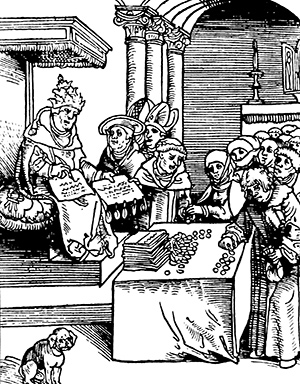Rich Pickings from Medieval Pilgrims
Pilgrims were a lucrative source of income for the Church and miracles did not come free. Adrian Bell and Richard Dale discover some striking parallels with modern marketing tactics in the management of shrines in the Middle Ages.
 At the end of the 12th century the monks of Reading Abbey compiled a collection of miracle stories designed to advertise the healing powers of the abbey’s most prized relic, the hand of St James. Among these miraculous accounts is the story of a man with a broken arm who vowed to make a pilgrimage to the shrine of St James, if the saint would mend his limb. St James duly obliged but when the man failed to fulfil his vow the saint intervened again and broke the man’s other arm. The point about this anecdote is that miracles were not free goods: they had to be ‘purchased’ through a devotional journey and a suitable offering. By successfully invoking the name of St James the unfortunate individual with the broken arm had incurred a debt that had to be honoured.
At the end of the 12th century the monks of Reading Abbey compiled a collection of miracle stories designed to advertise the healing powers of the abbey’s most prized relic, the hand of St James. Among these miraculous accounts is the story of a man with a broken arm who vowed to make a pilgrimage to the shrine of St James, if the saint would mend his limb. St James duly obliged but when the man failed to fulfil his vow the saint intervened again and broke the man’s other arm. The point about this anecdote is that miracles were not free goods: they had to be ‘purchased’ through a devotional journey and a suitable offering. By successfully invoking the name of St James the unfortunate individual with the broken arm had incurred a debt that had to be honoured.





